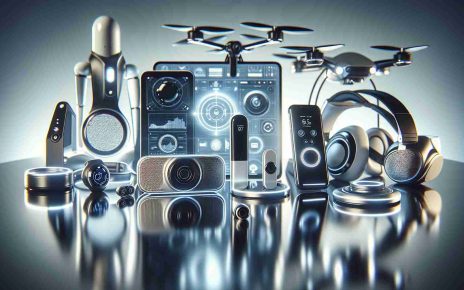In the realm of audio technology, Apple’s Spatial Audio is a game-changer. This innovative feature, available on devices like the AirPods Pro and AirPods Max, is transforming the way we experience sound, making it more immersive and lifelike than ever before.
The Magic of Spatial Audio
Spatial Audio is a technology that simulates a three-dimensional sound environment, creating an immersive listening experience. It uses directional audio filters to place sounds in a virtual space around the listener, making it seem as if the sounds are coming from all directions. This technology transcends the limits of traditional two-channel stereo recordings, adding an entirely new dimension to how we perceive sound.
Apple’s Spatial Audio takes 5.1, 7.1, and Dolby Atmos signals and applies these directional audio filters, adjusting the frequencies that each ear hears so that sounds can be placed virtually anywhere in a 3D space. This sophisticated approximation of how “reality” sounds draws users deeper into the experience, whether they’re listening to music, watching a movie, or playing a video game.
The Impact on Music and Entertainment
Spatial Audio is not just about enhancing the listener’s experience; it’s also about empowering creators. With the seamless integration of Logic Pro and Dolby Atmos, Apple is committed to supporting artists with new tools to bring their ideas to life in Spatial Audio. This technology allows artists to place “objects” (song elements such as drums, bass, and other instruments) onto the Dolby Atmos three-dimensional plane, creating a more dynamic and engaging sound experience.
Moreover, Spatial Audio is changing the sound experience for listeners and creators alike. It provides a wider soundstage and a more accurate representation of the original sound, making music sound more lifelike and realistic. It also enhances the sound quality of movies and other audio content, making the viewing experience more immersive and engaging.
The Future of Audio
As more and more companies jump on the bandwagon, we can start seeing 3D audio become the new standard. Apple’s Spatial Audio is leading the way in this revolution, inspiring many other brands to explore the possibilities of 3D audio technology. With the continuous advancements in this field, the future of audio is undoubtedly exciting and full of potential.
FAQ
What is Spatial Audio?
Spatial Audio is a technology that creates an immersive listening experience by simulating a three-dimensional sound environment. It uses directional audio filters to place sounds in a virtual space around the listener, making it seem as if the sounds are coming from all directions.
How does Apple’s Spatial Audio work?
Apple’s Spatial Audio takes 5.1, 7.1, and Dolby Atmos signals and applies directional audio filters, adjusting the frequencies that each ear hears so that sounds can be placed virtually anywhere in a 3D space.
What are the benefits of Spatial Audio?
Spatial Audio provides a more immersive and dynamic listening experience. It makes music sound more lifelike and realistic, and it enhances the sound quality of movies and other audio content. It also provides artists with new tools to create more engaging and dynamic sound experiences.
What devices support Apple’s Spatial Audio?
Apple’s Spatial Audio is supported on devices like the AirPods Pro and AirPods Max.
Glossary
Spatial Audio: A technology that creates an immersive listening experience by simulating a three-dimensional sound environment.
Directional Audio Filters: Tools used in spatial audio to place sounds in a virtual space around the listener.
Dolby Atmos: A technology that allows sound engineers to place sound precisely anywhere in a three-dimensional space.
Logic Pro: A digital audio workstation and MIDI sequencer software application for the macOS platform.
5.1, 7.1 Signals: These are multichannel audio systems. The numbers represent the configuration of speakers with the first number indicating the number of main channels and the second number indicating the presence of a subwoofer.
Soundstage: A term used to describe the spatial characteristics of sound reproduction, including depth, width, and height.



